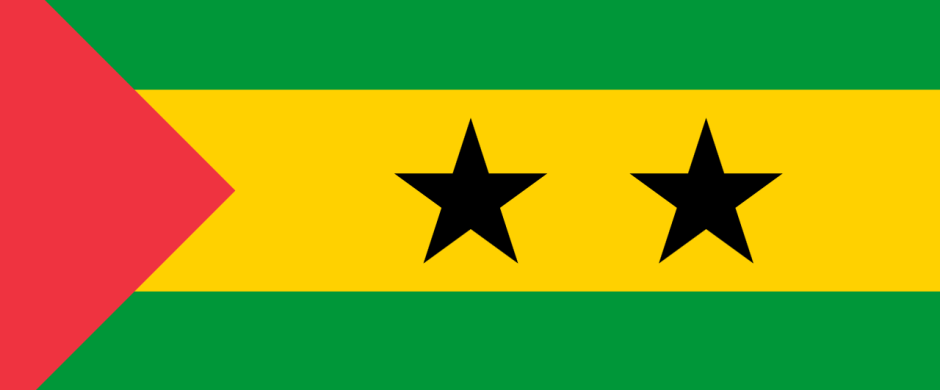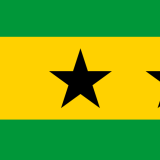How I learned about the country
“São Tomé e Príncipe” is a country that many people do not know about or have never visited. I came to know the name of the country as it appeared briefly on a TV program I watched, but this was not a profound reason. Of course, it wasn’t taught in school, and I don’t remember it ever appearing in textbooks.
The process behind deciding which country to visit
I had decided that the next country I would go to would be Africa. My last trip to Egypt was better than I expected, so I felt like visiting Africa again.
Africa is divided into five regions (northern, western, central, eastern, and southern), but the only region I have never been to is “Central Africa.” Although he had always wanted to go there someday, he had never made any concrete plans. This is because I knew for a fact that even among travelers who have traveled around the world, many people skip Central Africa due to its security and situation. Furthermore, there is almost no information available about the current situation beyond the coronavirus pandemic.
At that time, I decided to go to Sao Tomé.
① Cameroon was a transit point on the way to Sao Tomé
② VISA requirements were friendly to Japanese people
There are probably two points.
Regarding ①, while researching various possible flight tickets, I found out that Cameroon was one of the transit points to Sao Tomé. I wanted this trip to be a place to test myself, so I wanted to choose a country even further away than Cameroon, which was my candidate.
Regarding ②, Japanese nationals do not need a VISA if they stay in the country for less than 15 days. When I bought a plane ticket to Sierra Leone 6 years ago, it was extremely difficult to obtain a VISA (send the actual passport to the country → have the VISA stamp stamped there → have the actual passport returned, this process was followed by the procedure) In the past, I had given up on the idea of having to do it at the British embassy, so African countries with lax visa requirements are quite useful. Additionally, although I had been quite interested in island countries since Madagascar, there was also the fact that there were almost no island countries in Africa.
Air tickets and entry conditions are often checked.
Let’s buy a plane ticket! Even when we got to that stage, it took quite a while. The itinerary was complex, as there were many countries to transit through (Japan -> South Korea -> Ethiopia -> Cameroon -> Gabon -> Sao Tomé), including stopovers. I have to check whether a VISA is required at the transit point, and in the first place, is a VISA unnecessary for Sao Tomé? It was also necessary to make a final check. With a ticket this complicated, the risk of cancellation or delay increases significantly, so I bought it from the official website of Ethiopian Airlines.
Perhaps because there is no Sao Tomé embassy in Japan, only consulates (and honorary consulates), there was little information about the country itself. When I inquired about the latest information from the consulate I relied on, I received irrelevant information and ended up being swayed. One point that I still don’t quite understand is that “all foreigners must obtain an entry permit (e-Visa Entry Permit).” If public institutions do not function properly, the number of tourists, which is already small, will continue to decline.
Even with all of this going on, I was able to do as much as I could, although there were many points of view that I could confirm. By the way, what I was unable to do was obtain an entry permit.
The wonders of guidebooks
There are almost no guidebooks about Sao Tomé available on Amazon. And considering the shipping time, I had no choice but to buy it online. If it’s in paper form, you can read it at any time, but since the data is only on your smartphone or computer, you can only read the guidebook in the early morning or late evening when you’re staying at a hotel. What I realized once again is that guidebooks have a large amount of information and are highly comprehensive. The chapter structure is quite easy to understand. A single traveler cannot obtain this much information. I realized that it is perfect for increasing efficiency when traveling and getting to know a country comprehensively.
However, it cannot compete with maps sold/distributed locally. I felt that guidebooks were only created by foreigners, and local maps were living information.
Lack of information is an opportunity to train yourself and test yourself
A journey without information. It may have been since my trip to Malawi. It has been 6 years since I went to Malawi in 2017. I went to Malawi without a guidebook, without purchasing information including the internet in advance, and without bringing any kind of electronic terminals that could connect to the internet, so I had to gather all the information on site. There is no doubt that this action of cutting off the retreat made the trip at that time wonderful.
Compared to this experience, this Sao Tomé trip brought out my weaknesses. There was a little less than two months from the purchase of the plane ticket to departure, so I feel that even if it was unintentional, the preparation period was allowed. I searched the internet and found some information. There were some good points, but now I have some regrets about researching it. First, there is a large amount of information available on the Internet. When you research, you’ll find a lot of information, and if you don’t step into it, you’ll feel like you’re missing out.
I’m feeling a bit lost. I think so now. It’s still too early to blame it on age.
After returning home, I find that I often reflect on the way I traveled rather than reflecting on the local culture. This trip turned out to be a journey where I had a lot to reflect on.

